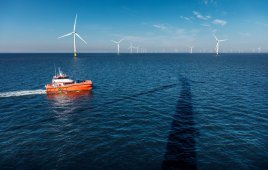AEP improvements of 5% and more are possible by taking advantage of improved controls, aerodynamic techniques, a better understanding of local winds, and more.
Alan Mortimer • Director of Innovation • SgurrEnergy Inc.
T he global wind energy sector has enjoyed dynamic growth over the past decade averaging 10 to 15% annually and last year reached over 430-GW capacity worldwide. By 2020, wind energy may deliver between 8% and 12% of the world’s electricity, a significant contribution.
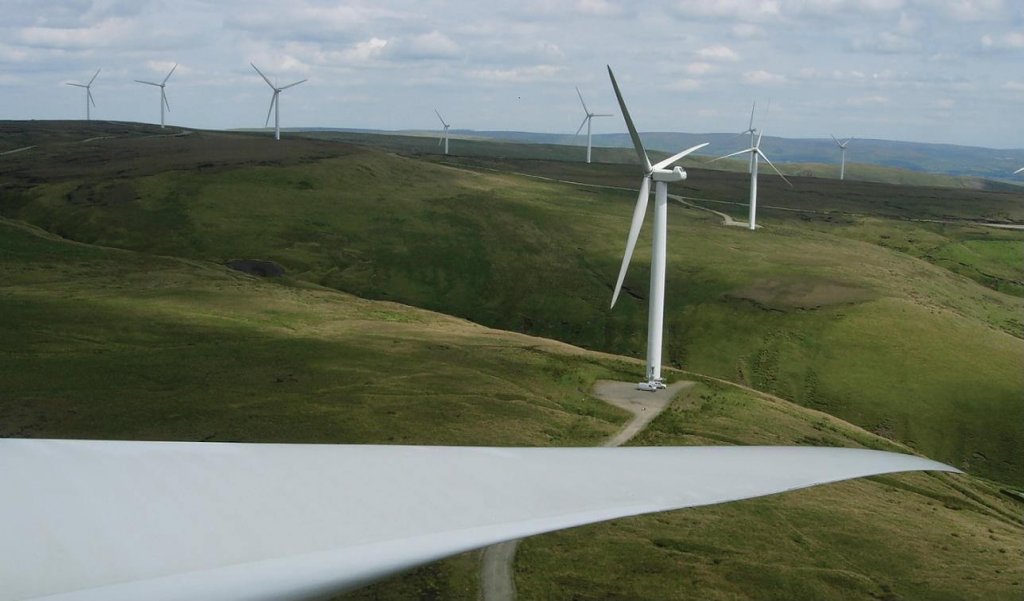
Wind farms around the world are run well enough, but there is room for improvement, and sometimes, significant room.
While the global wind sector growth continues at a rapid pace, many wind farms are maturing, resulting in owners and operators scrutinizing operational performance more than ever. Considerable attention has been paid to reliability and maintenance optimization in recent years, but the industry is now placing additional focus on performance enhancement. Advances in technology and understanding show that in many cases wind farms have not been optimally designed for the real on-site wind conditions and relevant constraining factors. There is substantial potential for improvement through retrospective measures related to control, aerodynamics, and even the local environment, delivering an opportunity for considerable commercial gain for wind farm owners.
Technology advancements
Measurement technology is an important contributor to understanding wind energy. Lidar in particular is giving previously unavailable levels of detailed and accurate data on the behavior of the wind in and around wind farms. Lidar data is now showing that many of the assumptions around wind characteristics are incorrect, revealing significant potential to better operate wind farms.
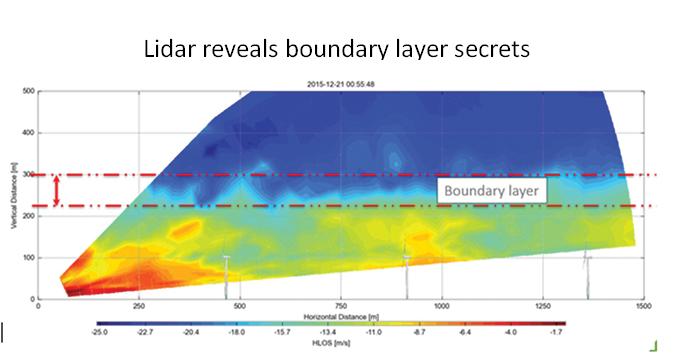
The lidar scan of wind through a wind farm site shows how lidar can open our eyes to real wind behavior. It clearly shows a defined boundary layer above the rotors.
This is typical of stable atmospheric conditions and is seen to break down as stability reduces, for example, in periods of high solar radiation. This sort of information is invaluable for fully understanding performance drivers and optimizing wind farms accordingly.
A good example of this value being realized is a U.S. wind farm which had suffered highly excessive rates of gearbox failures, with no obvious explanation. On further investigation of the site wind regime, using lidar, it became clear that low-level jets (high speed winds occurring relatively low in the atmosphere) were impinging the upper half of the rotor causing damaging loads to the drive trains.
These winds were not previously observed at the site because the traditional met mast that was used only recorded winds up to the hub height of the turbines, missing the higher level jets. The solution was to change the operating regime to avoid running during the most damaging conditions, as characterised by the lidar measurements, thereby avoiding substantial gearbox replacement costs.
Taking control
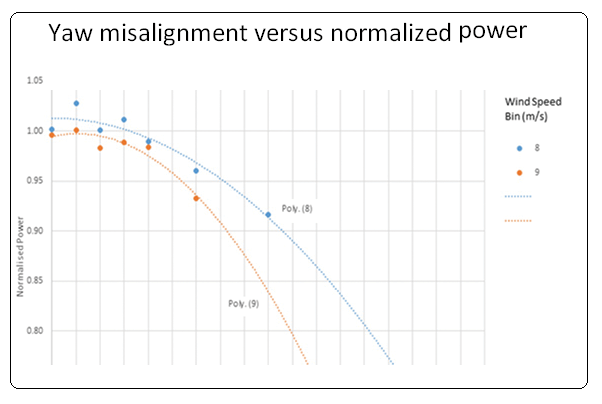
The curves indicate the power lost from yaw misalignments. For instance, a 6° misalignment (orange curve) can limit a turbines power output to about 93% of full potential. Poly 8 and 9 refer to different curve fitting polynomials.
Other technology advances are letting us improve the control of wind turbines to enhance performance as well as better manage component loadings. Control architecture has improved significantly in recent years and many older wind farms can now benefit from a controller upgrade to meet current standards and also better reflect the information we have on the behaviour of the wind.
Many wind farms are simply an aggregation of wind turbines controlled and individually operated, rather than operating as one well-optimized, efficient grid asset. This means there is room for improvement in control of the wind farm itself to control it as effectively as a power station, as if it were a single unit integrated with the grid. Managed properly, there are ways that wind farms can provide support to the grid under certain conditions such as system faults and dips in voltage or frequency. This is particularly important as more and more renewables come onto the system.
Advanced wind farm control can also manage constraining factors more optimally, such as situations in which turbines are shut down due to noise limits or shadow flicker effects. Excessive energy is often lost through traditional constraining practices and much of it can be recovered with appropriate control design.
Aerodynamic efficiency
Wind-turbine design involves certain compromises in relation to aerodynamic efficiency. For example, the optimum aerodynamic blade shape must be altered to allow the blade to carry structural loads, and to manufacture it at reasonable cost. The result is a trade-off in which there are accepted aerodynamic losses. New findings from lidar are uncovering complex wind characteristics, confirming that this trade-off is not optimum and that the aerodynamic losses can be greater than the ideal.
Aerodynamic efficiency is also often affected by blade degradation issues, one example being erosion of the leading edge which occurs over time and result in appreciable performance degradation. These losses may not be fully appreciated until the degradation has reached a critical condition requiring major repairs. There is good news: a substantial proportion of these aerodynamic losses can be recovered.
Adopting aeronautical techniques
Blade repair techniques have evolved over the years to the point where the original blade shape can be fully recovered. In addition, the application of vortex generators can be highly effective. Vortex generators are most commonly seen in the aeronautical industry, on aircraft wings, and the same theory applies to wind turbine blades. When the angle of attack of the flow to that wing exceeds a certain level, the aerodynamics
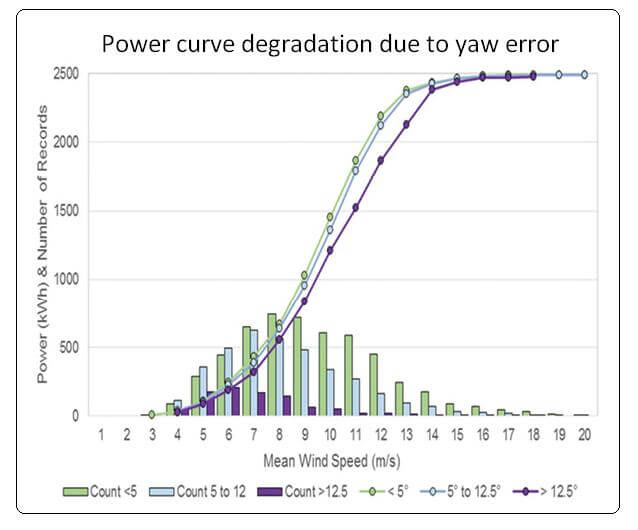
he blue power curve shows how yaw errors of greater than 12.5 degrees degrade power performance, by as much as 20% at some wind speeds.
suddenly break down and the wing goes into what is called stall. At the point of stall the airflow over the upper surface of the wing breaks away from it and no longer creates the suction effect which creates lift.
The effect is the same on a wind-turbine blade. It uses the same principle so we find the occurrence of stall often more prevalent than expected and it typically occurs at a certain point on the blade. Vortex generators can mitigate this effect by energizing the air, effectively putting a small twist into the air flow close to the surface of the blade which delays the effect of stall so the turbine can efficiently operate at a greater range of angles of attack, therefore increasing production. However, vortex generators must be carefully applied in exactly the right configuration for the turbine and the site characteristics, so field measurements using lidar have a key role to play.
This technique is being effectively applied in wind energy. In the right applications, vortex generators can deliver two to three percent increase in energy yield. Vortex generators are hardware that can be applied to individual turbines. They are small and their application is relatively straightforward. However, their installation must be carried out in a robust manner (as well as optimally positioned) to ensure they can withstand the rough environment for the long term. There have been challenges, but there are now suitable adhesives available to ensure that the overall solution is effective.
Into the woods
Although only a limited proportion of wind farms are within or close to forestry, there is substantial performance optimization potential for these projects. Experience is confirming that operating a wind farm within forestry results in complex interactions between the trees and wind turbines, even when these turbines are well above the forest canopy.
It is understood that trees slow the wind, but the extent to which they do in practice is turning out to be more significant. Trees absorb energy and make the wind flow more complex, increasing turbulence and increasing the gradient of wind speed above the canopy, which when added to other effects means that the turbines operate less efficiently.
With an in-depth understanding of these issues, it is possible to more accurately model and predict true forestry impacts, thereby establishing a true optimum balance between forestry restructuring (and associated costs), and the commercial benefits of energy yield gain and reduced loadings. In fact, the benefits of improved forestry restructuring are wide ranging and include:
• Increased wind speeds (due to less roughness) resulting in increased energy yield
• Reduced turbulence leading to lower loadings and longer component lifetime
• Reduced wind shear leading to better power performance and reduced loadings
• Reduced wind veer leading to less
yaw error, improved power performance and reduced loadings
• Reduced thermal effects particularly excessive vertical flow components typical in forested areas.
A case in point
SgurrEnergy’s recently completed forestry restructuring assignments have identified performance enhancements in excess of 5% annual energy production (AEP) for the whole wind farm, validated by comprehensive computational fluid dynamics (CFD) modelling and on-site lidar measurements.
Additionally, because of the reduced turbulence and wind gradient, the loadings on the turbines are reduced which has a positive impact on maintenance costs and on turbine life.Forestry restructuring solutions typically involve target felling with replanting to modern standards, thereby having a positive benefit for the environment, while, importantly, delivering commercial gain for the wind-farm owner.
Total optimization
The range of optimization measures continues to expand. Most recently we have developed adaptive noise control which will manage noise constraints much more efficiently than traditional techniques. Using real-time measurements and control ensures that production is continually maximized while meeting noise limits.
It is important to point out that all of the optimization measures considered at any wind farm are scrutinized ahead of commitment to ensure a positive cost to benefit ratio, in accordance with the owner’s requirements. Some optimization measures are low cost low gain, perhaps one to two percent. Others are higher cost and higher gain. The right combination of optimization techniques can deliver between 5% and 12% additional energy yield, making optimization an important commercial consideration for wind farm owners and a significant driver towards cost of energy reduction for the sector.
Filed Under: Featured, O&M

